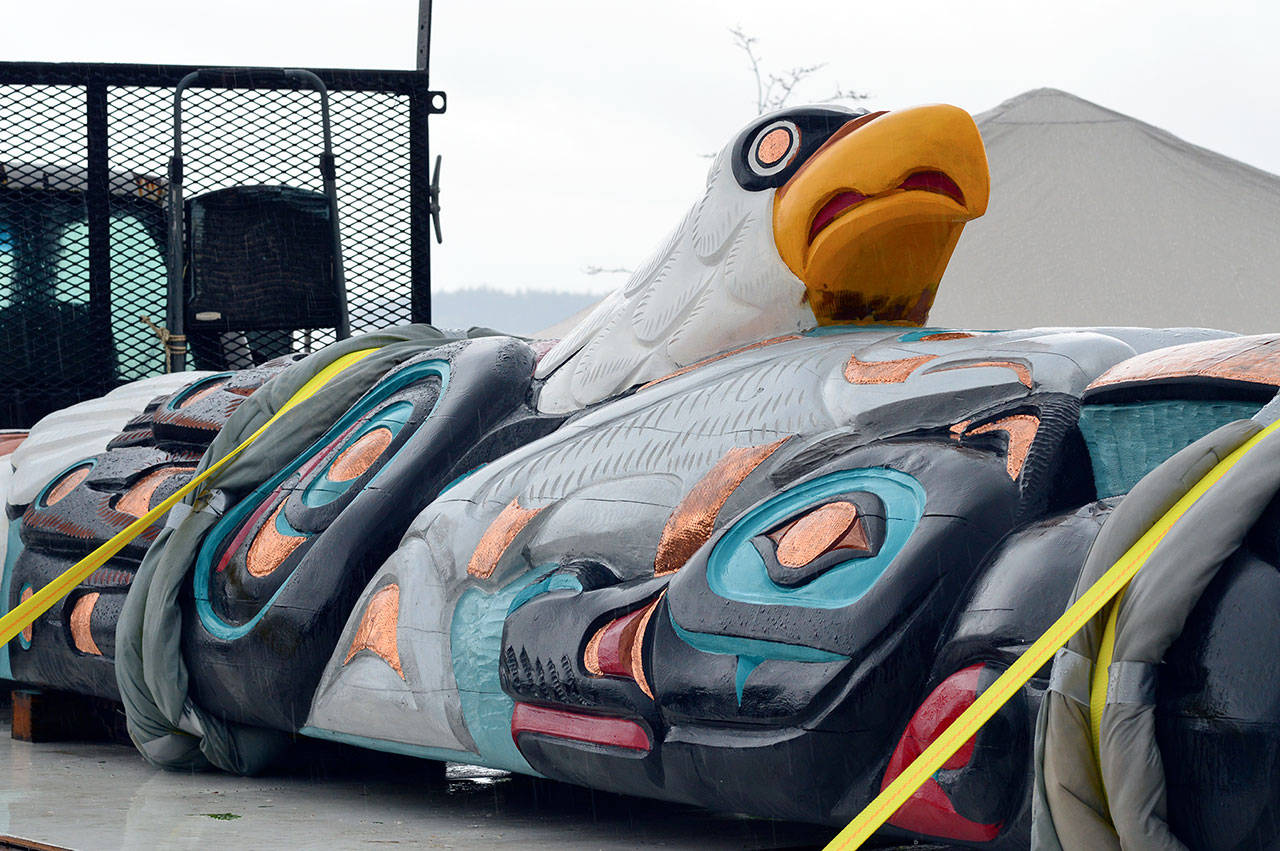PORT ANGELES — A totem pole carved at the Lummi Nation from a 400-year-old red cedar, which is is destined to make a cross-country journey to Washington, D.C., will visit Port Angeles, Lake Crescent and the Makah Nation on Tuesday.
The 25-foot totem pole and its carvers are expected to arrive at the Port Angeles City Pier parking lot at Lincoln Street and Railroad Avenue at about 1:30 p.m., said Krestine Reed, regional leader of the North Olympic Peninsula Broads ‘n Bros, which is coordinating the visit with Freddie Lane, the totem pole’s road manager and documentary film maker.
For the first half-hour or so, visitors can look over the totem pole and talk with carvers about the creation of the “Sacred Sites Totem Pole” to raise awareness of threatened indigenous sacred lands, Reed said.
At about 2 p.m., the welcoming ceremony will begin. Invited speakers include members of the Makah, Port Gamble, Hoh and Lower Elwha tribes.
LaTrisha Suggs, an enrolled member of the Jamestown S’Klallam Tribe and a Port Angeles City Council member, is scheduled to speak along with fellow council member Lindsay Schromen-Wawrin and others.
Following the ceremony will be an environmental and social justice rally from about 4 p.m. to 6 p.m., Reed said.
Face masks will be required, Reed said.
After the Port Angeles stop, carvers will take the totem pole to Lake Crescent, a sacred site, for a blessing ceremony and then continue to the Makah land to spend the night, Reed said.
The totem pole, which will travel to Washington, D.C.’s National Museum of the American Indian this summer, made a kind of debut in Port Townsend in April. It began its Northwest tour there just after it had been finished at the Lummi House of Tears carving shed outside Bellingham.
The main carvers were Jewell James, known to his Lummi tribe as Se Sealth, and his older brother Douglas James, known as Sit ki kadem.
The totem pole will begin the Red Road to D.C. on July 14. The theme of the trek is “Our Shared Responsibility,” as in the need to protect and restore this country’s lands and waters. Stops are planned at the Snake River dams and at such sacred sites as Chaco Canyon in New Mexico and Standing Rock in North Dakota.
By July 28, it is expected to arrive at the Smithsonian National Museum of the American Indian in Washington, D.C.
“Because the totem pole will carry the spirit of the lands it visits and the hopes and prayers of communities along the way, an environmental and social justice rally is planned after the totem blessing ceremony,” Reed said, noting that Tuesday will be the first anniversary of the death of George Floyd, who was murdered while being arrested in Minneapolis.
“This rally will call for the spirit of the totem to carry on its Red Road to D.C. journey our call to heal the Pacific Northwest ecosystem,” Reed said. “Such a healing demands environmental and social justice brought by breaching the lower Snake River dams in order to restore salmon and honor indigenous people’s treaty rights.”

